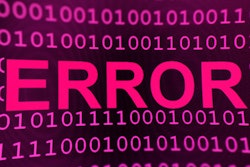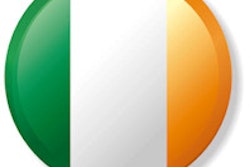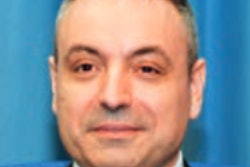
Teleradiology does not appear to slow down emergency care. Report turnaround time is faster with teleradiology, and it may improve care. Also, examination upload does not cause a significant delay and requisition is more often complete in teleradiology due to the recording of all demands and steps on a secure server, and the use of mandatory items in the requisition form.
These are the key findings of a prize-winning French study led by Amanda Martinon, interne en medecine, Faculté de Medecine Lyon Nord, and Dr. Charles Journé, former Chef de Clinique Assistant des Hôpitaux de Lyon and a radiologist at teleradiology provider Imadis. They presented their work at last month's European Congress of Radiology (ECR).
"Physicians working with a teleradiologist found communications and report turnaround time to be better than with an on-call radiologist," they noted. "Radiation exposure was found to be slightly higher in teleradiology. However, this difference could be due more to different acquisition parameters on the CT scanners of both radiology departments than to the workflows in both departments, and will have to be evaluated by further inquiries."
 The city of Lyon has nearly half-a-million inhabitants. It's known for its historical and architectural landmarks, and was designated a UNESCO World Heritage Site in 1998. Shown here is the Basilica of Notre-Dame de Fourvière.
The city of Lyon has nearly half-a-million inhabitants. It's known for its historical and architectural landmarks, and was designated a UNESCO World Heritage Site in 1998. Shown here is the Basilica of Notre-Dame de Fourvière.
The lack of on-call radiologists, mainly in rural areas, the decline of French medical demography, and the increasing need for imaging, especially in emergency cases, are acute issues in care management, explained the authors in an e-poster that received a cum laude award at ECR 2012. Thus, teleradiology is an emerging area in France, but because of legal and cultural considerations, workflow as implemented overseas must be adapted, and evaluation is still needed to validate it on a large scale.
Martinon and Journé studied the efficiency of teleradiology versus on-call radiology, and assessed the impact of teleradiology on emergency care in Lyon. The study was prospective, multicenter, controlled, and open. It compared the six-month workflows of two hospitals for emergency room (ER) patients undergoing CT scans read by either an on-call radiologist coming in on request in one hospital or a teleradiologist receiving requests and interpreting examinations from a dedicated center in the other. Patients were informed of the study by ER physicians and a written form.
The researchers included 478 patients undergoing CT scans, referred by the ER physicians of two Lyon hospitals: 224 from Croix-Rousse Hospital and 254 from Saint Joseph-Saint Luc Hospital, for neurological disorders, head trauma, thoracic disorders, and surgical abdomen. The average age was 61 years, and 52% of the patients were female.
Working hours were 24/7 in one hospital and from 8:00 to 18:30 hours in the other one, and to avoid bias caused by programmed examinations, only patients undergoing exams between 8:00 and 18:30 hours on weekends and holidays were included. In the Saint Joseph-Saint Luc ER department, 26 physicians and eight residents worked 24/7 on 36,000 patient registrations per year. In Croix-Rousse Hospital, 15 physicians and five residents worked from 8:00 to 19:00 with 20,000 patient registrations per year, the authors stated.
For the teleradiology workflow, the referring physician sent a complete online radiology requisition to the teleradiologist, and all information asked in the form was mandatory. The requisition was immediately transferred to the teleradiologist, who sent back an online exam protocol to the radiology technician. The radiology technician and the referring ER physician agreed on a time to do the examination, and the referring physician supervised the exam. Images were sent to the teleradiologist, who interpreted the exam. The teleradiologist sent back an online report to the ER physician.
If needed, all written steps (requisition form, exam protocol) can be dealt with over the phone, at the discretion of the radiologist, ER physician, or technician. However, all reports, even if transmitted over the phone, will then be properly written. All online exchanges go through a secure server.
Teleradiologists work from a dedicated center, where they can respond immediately to any exam requisition they receive. The center is equipped with a radiology information system (RIS), specialized computer monitors, and an optical fiber internet connection.
For the on-call radiology workflow, the referring physician made a phone call to the on-call radiologist, who came from home to the radiology department. The radiologist gave a protocol to the radiology technician and supervised the exam. The radiologist interpreted the exam and gave back a written report to the physician. Reports were also given over the phone if necessary. On-call radiologists had at their disposal a RIS, a PACS, specialized computer monitors, a CT scanner, and an echograph.
A total of 55.1% of exam indications with teleradiology were represented by head trauma (29.4%) and surgical abdomen (25.7%). Nearly 56% of exam indications with on-call radiology consisted of subarachnoid hemorrhage (19.3%), stroke (18.9%), and head trauma (17.6%) cases. Surgical abdomen represented only 17.1% of exams indications with on-call radiology, according to Martinon and Journé.
Head CT scans represented more than half of all exams (50.2% with teleradiology and 57.2% with on-call radiology). Abdominal CT scans represented 27.2% of all exams with teleradiology versus 18.8% of all exams with on-call radiology. Angioscans represented 17.1% of all exams with teleradiology versus 10% of all exams with on-call radiology. Thoracic CT scans represented 3.9% of all exams with teleradiology versus 10.4% of all exams with on-call radiology. Musculoskeletal exams represented 0.4% of all exams with teleradiology versus 3.6% with on-call radiology. Body scans represented 1.2% of all exams with teleradiology, versus none for on-call radiology, they stated.
The average delay between patient registration in the ER and reporting was longer with teleradiology: five hours and 34 min, against four hours and 35 minutes with on-call radiology. But all radiological delays (between requisition and protocol, exam or reporting) were shorter with teleradiology. The average delay between referring and protocol was 37 minutes and 58 seconds with on-call radiology versus three minutes 46 seconds with teleradiology. The average delay between referring and CT scan was one hour and 12 minutes with on-call radiology versus 36 minutes with teleradiology. The average delay between referring and reporting was one hour 35 minutes for on-call radiology versus 61 minutes with teleradiology.
The difference between teleradiology and on-call radiology delays was 34 minutes and 12 seconds for referring to protocol, 36 minutes for referring to exam, and 34 minutes for referring to report, all in favor of teleradiology, the authors noted.
For stroke, subarachnoid hemorrhage and head trauma cases, delays between registration and requesting or reporting were also significantly increased with teleradiology, whereas radiological delays between requesting and protocol, exam or reporting were significantly decreased with teleradiology. The difference in delays for other indications was not significant because of an insufficient number of cases.
Average radiation dose was lower when working with on-call radiology: 903.67 mGy-cm versus 1030.70 mGy-cm for teleradiology. These findings also applied to brain CT scans for stroke and subarachnoid hemorrhage, as well as abdominal CT scans for surgical abdominal pain. However, these exposure measurements do not take account of the different scanner hardware used, they wrote.
The Lyon group evaluated the quality of exam requisition through healthcare quality assurance (QA) indicators, and they assessed physician satisfaction by a survey. With teleradiology, all requisitions were available and conformed to a QA indicator. Only 78% of the exam requisitions were available with on-call radiology, and 60% of these requisitions conformed to QA indicators. One item was missing in 29% of cases, two were missing in 17%, and three were missing in 1%.
Seven physicians in Croix Rousse Hospital responded to the satisfaction survey, versus 17 in Saint Joseph-Saint Luc Hospital. Communication was reported to be satisfactory for 85.7% of the physicians working with an on-call radiologist, and it was described as excellent by 14.3% of physicians. Communication was reported to be satisfactory for 47.1% of the physicians working with a teleradiologist, and 52.9% thought it was excellent.
"All physicians working with an on-call radiologist found report turnaround time to be sometimes too long to obtain," they concluded. "[Nearly 19%] of the physicians working with a teleradiologist found report turnaround time to be too long to obtain, and 81.3% found reports to be most of the time immediately available."



















